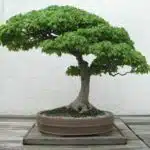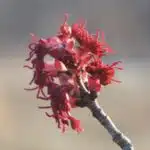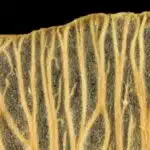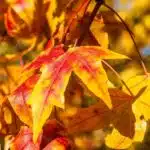Hedge maple, also known as Acer campestre, is a deciduous tree species that is widely cultivated for its ornamental value and ability to form hedges. The tree species is native to Europe but has been introduced in various parts of the world, including North America. In this article, we will explore how to grow hedge maple successfully and reap its full benefits.
Growing hedge maple requires an understanding of its growth habits, environmental requirements, and care practices. This article provides practical tips on how to cultivate healthy hedge maple trees that thrive in various environments. Furthermore, we will discuss the uses of hedge maples in landscaping and how you can incorporate them into your garden or landscape design. Whether you are an experienced gardener or a novice enthusiast seeking to add beauty to your outdoor space, this article offers valuable insights into growing hedge maples that will help you achieve your gardening goals.
Understanding The Hedge Maple Species
The hedge maple, scientifically known as Acer campestre, is a small to medium-sized tree that belongs to the family Sapindaceae. It is native to Europe and Western Asia and has been widely planted in North America as an ornamental tree due to its attractive foliage and hardy nature. This species typically grows up to 30 feet tall and 20 feet wide with a rounded crown and a dense branching habit.
Hedge maple growth habits are characterized by their slow-to-moderate growth rate, which makes them an excellent choice for hedging or screening purposes. The species can thrive in both full sun and partial shade, making it adaptable to a variety of growing conditions. Hedge maples are also tolerant of drought, soil compaction, and pollution, making them ideal for urban landscapes.
Propagation techniques for hedge maples include seed propagation or vegetative propagation through cuttings or layering. Seed propagation requires stratification before planting in the spring, while vegetative propagation is best done in the fall using semi-hardwood cuttings with rooting hormone. With proper care and maintenance, hedge maples can live for up to 150 years or more, providing long-lasting beauty and functionality to any landscape.
When it comes to growing hedge maples successfully, choosing the right location is crucial.
Choosing The Right Location For Your Hedge Maple
The hedge maple is a popular choice among gardeners who want to add a touch of elegance to their landscape. When choosing a location for your hedge maple, it is important to consider factors such as soil type and sun exposure. The best soil for hedge maple is one that is well-draining and rich in nutrients. This will ensure that the tree grows strong and healthy.
In terms of sun exposure, the hedge maple prefers partial shade to full sun. It can tolerate some shade, but too much shade can cause it to become weak and spindly. When selecting a location for your hedge maple, look for an area that receives morning sun and afternoon shade. This will provide the perfect balance of light and shade for your tree.
Harsh weather conditions can be detrimental to the health of your hedge maple. To protect it from extreme temperatures, wind, and frost damage, you should choose a sheltered location that is protected from these elements. You can also wrap the trunk with burlap or use a tree wrap to protect it from winter damage.
Transition: Now that you have chosen the right location for your hedge maple, it’s time to prepare the soil for planting.
Preparing The Soil For Planting
Soil preparation is a crucial step in growing healthy and robust hedge maple trees. The right kind of soil can provide the necessary nutrients and support for the seedlings to grow into mature trees. Before planting, it’s essential to ensure that the soil is adequately prepared to meet the nutrient requirements of hedge maple.
To prepare soil for planting hedge maple, start by removing any weeds or debris from the area. This will help create a clean and healthy growing environment for your seedlings. Next, loosen up the soil with a garden fork or tiller to promote better air circulation and water drainage. A deep-tilling approach can help break up compacted soil layers, creating enough space for roots to grow freely.
The next step in preparing soil for planting hedge maple is adding organic matter such as compost or well-rotted manure. These materials are rich in essential nutrients that facilitate healthy growth and development of young plants. Mix these amendments thoroughly into the topsoil layer, ensuring even distribution throughout the planting area. With proper soil preparation, you can create an ideal growing environment that will support your hedge maple seedlings’ success.
Transitioning into planting, once you have prepared your soil correctly, it’s time to begin planting your hedge maple seedlings. Properly prepped soil will give your young plants a head start towards becoming healthy mature trees. In this next section, we’ll explore some tips on how best to plant and care for your hedge maples during their early stages of growth.
Planting Hedge Maple Seedlings
When selecting a location for planting hedge maple, it is important to consider the plant’s requirements for sunlight, soil type and moisture. Furthermore, it is important to research the growing zone for the species, as well as the local climate and soil composition. While planting hedge maple seedlings, it is important to prepare the soil with a mixture of organic matter, fertilizer and amendment. Digging a hole that is twice the diameter of the root ball and just as deep is recommended for best results.
Choosing A Location
Choosing the right location is crucial when it comes to planting hedge maple seedlings. One should consider various factors, including soil requirements and sun exposure. For instance, this tree species thrives best in well-drained soils that are fertile and slightly acidic. It is advisable to test the soil pH and amend accordingly before planting.
In terms of sun exposure, hedge maples prefer partial shade or full sun. This means that one should avoid planting them in areas with complete shade or intense sunlight. Ideally, choose a location that receives morning sunlight but is shaded during the hottest part of the day. This will provide optimal growing conditions for your hedge maple seedlings.
Furthermore, when choosing a location, ensure that there is enough space for your hedge maples to grow without competition from other plants or structures such as walls or buildings. The spacing should be at least 20 feet apart as this tree species can grow up to 25 feet tall and 20 feet wide. By selecting the right spot for planting your hedge maple seedlings, you will give them the best chance to thrive and add beauty to your landscape for years to come.
Planting Techniques
After choosing the right location for planting hedge maple seedlings, the next step is to employ proper planting techniques. One of the critical factors to consider when planting these trees is spacing requirements. As mentioned earlier, hedge maples can grow up to 25 feet tall and 20 feet wide. Hence, it is essential to have enough space between them to avoid competition for nutrients and sunlight. A spacing of at least 20 feet apart is recommended for optimal growth.
Another essential aspect of planting techniques is soil amendments. Before planting your hedge maple seedlings, it is crucial to test the soil pH and amend it accordingly. As a general rule, this tree species thrives best in well-drained soils that are fertile and slightly acidic. Organic matter such as compost or peat moss can be added to improve soil fertility and drainage. However, excessive use of organic matter should be avoided as it may lead to waterlogging and root rot.
When planting your hedge maple seedlings, ensure that the hole you create is twice as wide as the root ball but not deeper than the size of the root ball. This will allow room for roots to spread out naturally while providing ample support for your young tree. After placing your seedling in the hole, backfill with soil and firm gently around the base of the plant before watering thoroughly. By following these planting techniques, you will give your hedge maple seedlings a strong foundation for healthy growth in their new environment.
Watering And Fertilizing Your Hedge Maple
Proper watering and fertilization play a crucial role in the growth and development of your hedge maple. The tree requires regular watering, especially during the hot summer months. It is recommended to water your hedge maple once a week, providing it with approximately one inch of water each time. During periods of drought or heatwaves, you may need to increase the frequency of watering.
It is essential to ensure that the soil around the hedge maple remains moist but not waterlogged. Overwatering can cause root rot, which can be fatal for your plant. To prevent this, you should avoid overwatering and make sure that the soil has proper drainage. Additionally, applying a layer of mulch around the base of your hedge maple can help retain moisture in the soil.
Your hedge maple also requires proper nutrient levels to promote healthy growth. Fertilizing your tree regularly helps provide these nutrients. You should feed your hedge maple with a balanced fertilizer every spring and fall. This will help ensure that it receives adequate amounts of nitrogen, phosphorus, and potassium. Be careful not to over-fertilize as this can cause damage to the roots or foliage.
Moving forward from watering and fertilizing your hedge maple, pruning and shaping are important tasks that require attention. By taking care of these tasks properly, you can enhance both the aesthetic value and health of your plant. Read on to learn more about pruning techniques for your hedge maple tree!
Pruning And Shaping Your Hedge Maple
After properly watering and fertilizing your hedge maple, the next step in maintaining its health is through pruning and shaping. Pruning techniques are essential to control the size and shape of your hedge maple, as well as to promote healthy growth. One of the most critical things to remember when pruning a hedge maple is to do so during its dormant period, which is typically in late winter or early spring.
When it comes to shaping tools, there are several options available, ranging from hand-held pruners to electric trimmers. Hand-held pruners are ideal for removing small branches, while electric trimmers can quickly shape larger areas of the tree. However, no matter what tool you use, it’s crucial to keep them sharp and clean to prevent any damage or disease to your tree.
To ensure a healthy hedge maple that looks great all year round, follow these tips:
- Start pruning only after the second year of growth
- Use sharp tools for precise cuts
- Cut off damaged or diseased branches immediately
- Remove deadwood annually
- Always sterilize tools before use
Pruning and shaping your hedge maple is crucial for maintaining its health and appearance. By following recommended techniques and using proper tools, you can keep your tree looking beautiful for years to come. However, even with proper care, pests and diseases can still affect your tree. In the next section, we will discuss how to deal with common hedge maple pests and diseases.
Dealing With Common Hedge Maple Pests And Diseases
Hedge maples are generally hardy and resistant to most pests and diseases. However, there are still a few common issues that can arise from time to time. One of the most common ailments is verticillium wilt, which is a fungal infection that causes yellowing leaves and stunted growth. The best way to prevent this disease is to avoid planting hedge maples in areas where it has previously been present. If you suspect your tree may be infected, prune away affected branches and remove any fallen leaves or debris from around the base of the tree.
Another pest that can cause problems for hedge maples is aphids. These tiny insects feed on the sap of the leaves and can cause significant damage if left unchecked. Prevention tips include keeping your trees healthy with regular watering and fertilization, as well as spraying them with a strong jet of water to knock off any visible aphids. For natural remedies, try spraying your trees with a mixture of dish soap and water, or introducing ladybugs to your garden.
Finally, keep an eye out for powdery mildew, a fungal infection that presents as a white powdery substance on the foliage of your tree. Prevention tips include ensuring proper air circulation around your trees by pruning back overgrown branches and avoiding overhead watering. Natural remedies include spraying with a solution made from baking soda and water or using milk diluted with water as a foliar spray.
When dealing with pests and diseases on your hedge maple trees, it’s important to act quickly before they have a chance to take hold. With these prevention tips and natural remedies at your disposal, you can keep your trees healthy and looking great year-round. In the next section, we’ll look at some creative ways you can use hedge maple in landscape design projects.
Using Hedge Maple In Landscape Design
Hedge maple (Acer campestre) is a versatile deciduous tree that can be used in a variety of landscape designs. With its dense, compact growth habit and attractive foliage, it makes an excellent choice for creating hedges and screens, as well as for use in mixed plantings. This species is native to Europe and western Asia but has become naturalized in many areas of North America.
One of the main benefits of using hedge maples in urban landscapes is their ability to thrive in difficult growing conditions. They are tolerant of air pollution, drought, and compacted soils, making them an ideal choice for city gardens and other challenging sites. Furthermore, they are relatively low-maintenance trees that require minimal pruning or shaping to maintain their desired form.
Incorporating hedge maple into mixed plantings can create a visually appealing landscape design that offers both aesthetic appeal and functional benefits. For example, mixing hedge maple with other deciduous trees or evergreens can provide year-round interest while also providing shade, privacy, or windbreaks. Additionally, combining hedge maples with flowering shrubs or perennials can create colorful accents throughout the growing season.
Transition: Now that you know how to incorporate hedge maple into your landscape design, let’s explore some creative ways to use this versatile tree to create stunning hedges.
Creative Hedge Maple Hedge Designs
Hedge maple is a popular deciduous tree known for its stunning color variations and adaptability to different soil types. One of the best ways to showcase its beauty is by creating creative hedge designs that can enhance the look of any garden or lawn. Topiary techniques can be used to create intricate shapes, adding visual interest and texture to your landscape.
Here are four design ideas that you can try with your hedge maple:
Spiral Design: This design involves shaping the hedge maple into a spiral shape, which creates an eye-catching feature in any landscape.
Tiered Design: A tiered design involves pruning the tree so that it has multiple levels, creating a layered effect. This design works well in gardens with sloped landscapes.
Formal Design: A formal design involves shaping the hedge into symmetrical shapes such as squares or rectangles. This style works well in formal gardens or properties with architectural styles such as Georgian or Victorian.
Informal Design: An informal design involves pruning hedges in free-flowing shapes, which makes them look natural and relaxed. This style works well in cottage-style gardens or properties with a rustic feel.
Regardless of the design you choose, it’s essential to select hedge maples with varying color variations to add depth and interest to your garden.
To maintain optimal health and beauty for your hedge maple, regular maintenance is key. In the next section, we will explore some tips on how to care for your hedge maple properly.
Maintaining Your Hedge Maple For Optimal Health And Beauty
The maintenance of your hedge maple is crucial in ensuring it remains healthy and beautiful. One theory that has been circulating among gardeners is that the overuse of fertilizers can be detrimental to the tree’s health. While some fertilization is necessary, too much can lead to excessive growth and weakened branches. It is important to investigate the truth behind this theory and adjust your fertilizer use accordingly.
Seasonal care is also essential for your hedge maple’s optimal health. During the winter months, it is important to protect the roots from freezing temperatures by adding a thick layer of mulch around the base of the tree. In the spring, pruning dead or damaged branches will encourage new growth and help shape the tree. Additionally, regular watering during dry spells will keep your hedge maple hydrated and prevent stress on its system.
Pest prevention is another aspect of maintaining your hedge maple’s health. Common pests that affect this species include aphids, scale insects, and spider mites. Regularly inspecting your tree for signs of infestation such as discolored leaves or sticky residue can help catch these pests early on. Neem oil or insecticidal soap can be effective treatments for minor infestations, but severe cases may require professional intervention.
| Season | Care |
|---|---|
| Winter | Protect roots with mulch |
| Spring | Prune dead/damaged branches; water regularly |
| Summer | Monitor for pests; provide shade |
| Fall | Rake leaves; continue watering |
Maintaining your hedge maple requires attention to detail and a commitment to providing proper care throughout each season. By adjusting fertilizer use, practicing seasonal care techniques, and preventing pest infestations, you can ensure that your tree remains healthy and beautiful for years to come.
Conclusion
The hedge maple is a beautiful and versatile tree that can enhance any landscape. Understanding the species and choosing the right location are crucial for successful growth. Preparing the soil, planting seedlings, watering, fertilizing, and maintaining optimal health are essential steps in growing a healthy and beautiful hedge maple.
In addition to its aesthetic appeal, the hedge maple has practical uses in landscape design. Its dense foliage provides privacy and sound insulation, making it an ideal choice for hedges. Creative designs utilizing hedge maples can add visual interest to any property.
According to recent studies, incorporating trees into urban landscapes can improve air quality and reduce energy costs by providing shade and cooling effects. With its many benefits and easy care requirements, the hedge maple is a wise investment for any homeowner or landscaper looking to beautify their surroundings while also promoting sustainability.
Image Credits
- “Hedge Maple” by dankeck (featured)





























